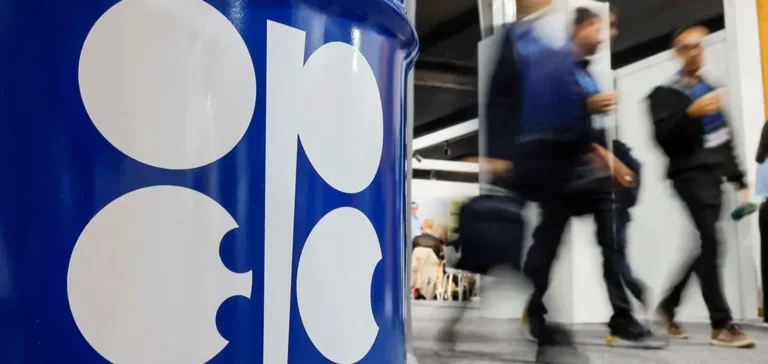The eight OPEC+ countries implementing voluntary cuts approved Saturday a production increase of 547,000 barrels per day for September, exceeding market expectations which anticipated 411,000 additional barrels. This decision comes amid “healthy market fundamentals” according to the organization, but raises questions about the future balance between supply and demand. Saudi Arabia, Russia, Iraq, the United Arab Emirates, Kuwait, Kazakhstan, Algeria and Oman participated in this virtual meeting that lasted only 16 minutes according to a delegate. This speed demonstrates a prior consensus among members on the need to accelerate the return of their barrels to the market.
A gradual exit strategy facing competitive pressure
The decision is part of a progressive dismantling plan for the 2.2 million barrels per day of voluntary cuts announced in November 2023, which add to the 1.65 million barrels already cut since April 2023. The group plans to fully restore these volumes by September 2026, but reserves the ability to “pause or reverse” this trajectory according to market conditions. This flexibility appears crucial as non-OPEC+ production experiences unprecedented growth. The United States is expected to add 1.1 million barrels per day between 2024 and 2026, while Brazil, Canada and Guyana will each contribute approximately 300,000 to 500,000 additional barrels over the same period.
The International Energy Agency (IEA) forecasts limited global demand growth of 720,000 barrels per day in 2025, well below historical levels. India is gradually replacing China as the main growth driver, representing 25% of the global consumption increase. Chinese demand is expected to grow by only 90,000 barrels per day in 2024, constrained by the rise of electric vehicles and increased use of liquefied natural gas (LNG) for road transport.
Persistent compliance challenges
The compliance issue remains thorny for the alliance. Iraq overproduced by 1.44 million barrels per day between January and July 2024, while Kazakhstan and Russia respectively exceeded their quotas by 699,000 and 480,000 daily barrels. These three countries submitted revised compensation plans, promising to fully compensate their overproductions by September 2025. Iraq faces particular structural challenges with the autonomous Kurdistan region producing independently from Baghdad’s central government.
Compliance with these commitments remains uncertain given certain members’ history of non-compliance. The next deadline of August 18 for submitting revised compensation plans will constitute an important test of the group’s cohesion. Rystad Energy analysts note that Iraqi production, excluding Kurdistan, already reached 3.99 million barrels per day in July, well beyond its official quota of 4 million.
An oil market under geopolitical tension
Growing tensions between Israel and Iran add a geopolitical risk premium to the market. The Strait of Hormuz, through which approximately 20% of global oil supply transits, remains vulnerable to potential disruptions. Goldman Sachs estimates that a prolonged closure of this strategic passage could push crude prices beyond 100 dollars per barrel. Houthi attacks in the Red Sea continue to disrupt maritime routes, forcing many Western oil tankers to take alternative routes that are longer and more costly.
US sanctions against Russia and Iran also complicate trade flows, although these countries have found alternative buyers in Asia, primarily in China and India. OPEC’s spare capacity, estimated at 4.6 million barrels per day in 2024, theoretically offers a safety cushion, but most of this capacity is located in the Persian Gulf and could be inaccessible in case of major conflict.
Price prospects under pressure
Analyst Skip York from the Baker Institute for Public Policy suggests that OPEC+ might suspend increases after September, once the Northern Hemisphere’s seasonal demand peak has passed. This hypothesis is based on forecasts of a 2 million barrels per day surplus in the fourth quarter according to S&P Global Commodity Insights, which could push Brent down to 58 dollars in December. OPEC+’s market share is expected to fall to 46% in 2025-2026, compared to 53% when the expanded group was formed in 2016.
Producing countries’ budgetary constraints complicate the equation. Saudi Arabia needs an oil price close to 86 dollars per barrel to balance its budget according to the International Monetary Fund (IMF), creating pressure to maintain high prices while facing growing competition. The next full OPEC+ ministerial meeting scheduled for November 30 will determine the group’s longer-term strategy in the face of these multiple challenges.






















